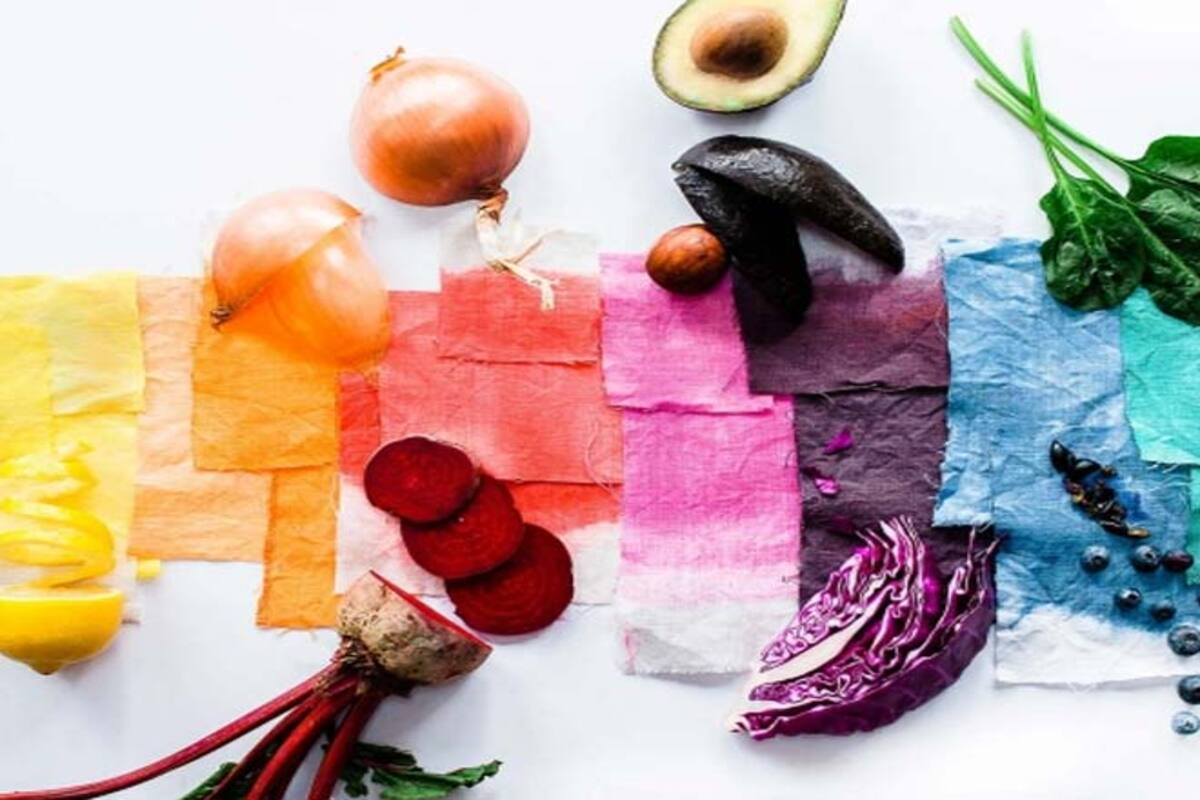Malavika Mohanan’s style guide for 2025: Bold, elegant, and effortlessly chic
Discover Malavika Mohanan's trendsetting fashion for 2025 with bold, elegant looks, from bodycon dresses to vibrant gowns. Get inspired by her effortless style!
Part of the joy of creating your dye is the happy mistakes and surprises that can come by combining plant material and mordants. A mordant is a substance used to permanently bond dyes on fabrics or create a chemical reaction to create new colors.
SNS | New Delhi | February 4, 2022 7:37 pm

Dying Fabric (Getty Image)
For thousands of years, dyes were created by using natural materials like leaves, roots, bark, and flowers. Some of the most beautiful and longest-lasting colored fabrics were created with those natural dyes. Today, most fabrics and fibers are dyed with synthetic dyes that create reliable and easy to repeat results. The liquid synthetic dyes you can buy for home use involve fewer steps than naturally created dyes.
Part of the joy of creating your dye is the happy mistakes and surprises that can come by combining plant material and mordants. A mordant is a substance used to permanently bond dyes on fabrics or create a chemical reaction to create new colors. Mordants include alum, sodium chloride (table salt), and certain metal salts like iron, copper, and tin.
Advertisement
Advertisement
Blue: Indigo, red cabbage, elderberries, red mulberries, blueberries, purple grapes
Orange: carrots, gold lichen, onion skins
Grey or black: blackberries, walnut hulls, iris root
Brown: dandelion roots, oak bark, walnut hulls, tea, coffee, acorns
Green: artichokes, spinach, peppermint leaves, snapdragons, lilacs, grass, nettles, peach leaves
Yellow: bay leaves, marigolds, sunflower petals, dandelion flowers, paprika, turmeric, celery leaves, lilac twigs, mahonia roots, barberry roots, yellowroot roots.
How To Prepare Your Fabric
Types of fabric to use: Using natural fabrics like cotton, linen, wool, and silk will give the best results as opposed to synthetic fibers, so make sure you use those.
Follow these steps to prepare your fabric before dyeing:
Step 1: Wash your fabric and keep it wet.
Step 2: Prepare a fixative to help your fabric absorb the natural dyes well. Use either of the two given below, according to the ingredients you use:
Salt (for berries): Mix half a cup of salt in eight cups of cold water
Vinegar (for the other plants): Mix one part white vinegar with four parts cold water
Step 3: Soak your damp fabric in the fixative for an hour.
Step 4: After an hour, rinse the fabric with cool water.
How To Dye Your Fabric
What you need: plastic sheet to cover the table, rubber gloves, stainless steel/glass pot, plant material of choice, fabric.
Step 1: Cover your worktop and wear your gloves to avoid staining the worktable as well as your hands.
Note: Wear clothes that you don’t mind staining.
Step 2: Place your dyeing source items in a steel or heatproof glass pot and fill it with double the quantity of water as compared to the items.
Step 3: Simmer it for about an hour until you get a dark color out of the plant materials.
Step 4: Once you’re done, strain out the material and keep the liquid in the pot.
Step 5: Place the fabric in the liquid and bring it to a slow boil. Simmer for about an hour and keep stirring it occasionally.
Step 6: Check your fabric to see the color. You can keep it submerged in the water overnight after taking it off the heat for darker results.
Note: Keep in mind that once the fabric dries, the color will lighten.
Step 7: After you’re done, take the fabric out and wash it with cold water.
Note: Wash the fabric on its own since the residue dye will rinse off with the water.
Step 8: Dry as usual and you’re ready with your very own homemade naturally-dyed piece!
Advertisement
Discover Malavika Mohanan's trendsetting fashion for 2025 with bold, elegant looks, from bodycon dresses to vibrant gowns. Get inspired by her effortless style!
Learn about the lesser-known symptoms of pneumonia, including chest pain, drowsiness, ear pain, swollen lymph nodes, and eye discomfort, and when to seek medical help.
Discover light and energizing breakfast ideas to keep you fueled throughout the morning, including moong dal chilla, overnight oats, avocado toast, and more.
Advertisement
